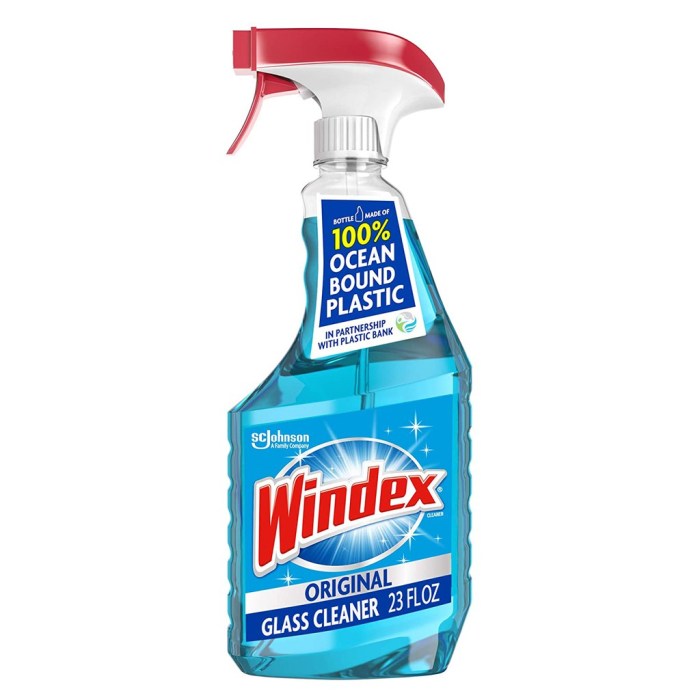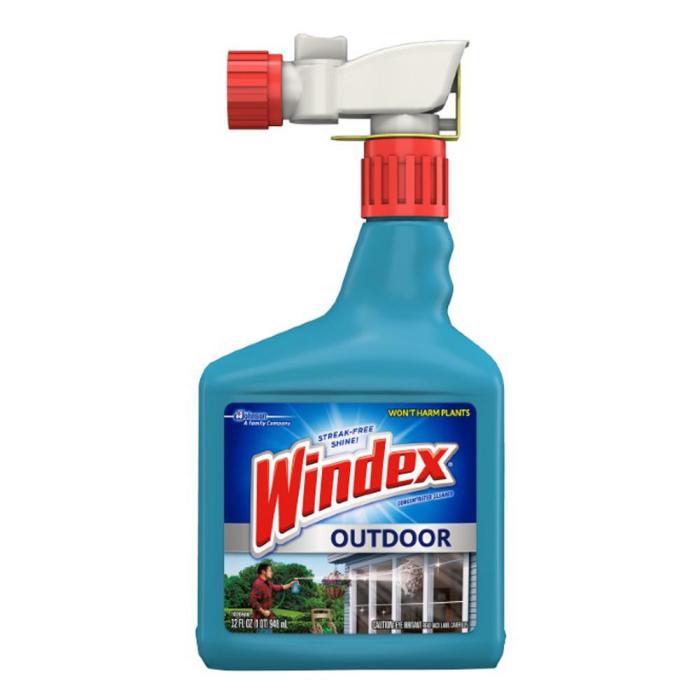What is the ph of windex – Windex, a household staple, is known for its effective cleaning abilities. But what exactly is the pH of Windex, and how does it impact its performance? Dive into the chemical composition and explore the factors that influence the pH of this ubiquitous cleaning solution.
This comprehensive guide will delve into the science behind Windex, uncovering the role of pH in its cleaning capabilities. Get ready to unravel the secrets of this everyday essential!
Chemical Composition of Windex: What Is The Ph Of Windex

Windex is a popular glass cleaner that is widely used in households and commercial settings. It is formulated with a blend of chemicals that effectively remove dirt, grime, and streaks from glass surfaces.
The primary active ingredient in Windex is isopropyl alcohol, which is a solvent that helps to dissolve and remove dirt and grease. Other ingredients include water, ammonia, and surfactants, which help to emulsify dirt and grime and prevent it from redepositing on the surface.
Ingredients and Concentrations
The following table lists the ingredients in Windex and their respective concentrations:
| Ingredient | Concentration |
|---|---|
| Isopropyl alcohol | 70-80% |
| Water | 10-20% |
| Ammonia | 3-5% |
| Surfactants | <1% |
pH Measurement

pH is a measure of the acidity or alkalinity of a solution. It is measured on a scale of 0 to 14, with 0 being the most acidic and 14 being the most alkaline. A pH of 7 is neutral.
The pH of Windex can be determined using a pH meter. A pH meter is a device that measures the pH of a solution by measuring the electrical potential between two electrodes.
Step-by-Step Procedure for Measuring the pH of Windex
- Calibrate the pH meter according to the manufacturer’s instructions.
- Rinse the pH meter probe with distilled water and blot it dry.
- Dip the pH meter probe into the Windex solution.
- Wait for the pH meter reading to stabilize.
- Record the pH reading.
Factors Affecting pH

The pH of Windex can be influenced by several factors, including temperature, concentration, and the presence of other chemicals.
Temperature: As temperature increases, the pH of Windex typically decreases. This is because higher temperatures increase the activity of hydrogen ions (H+), leading to a more acidic solution.
Windex is a popular glass cleaner with a pH of 10, making it slightly alkaline. If you’re interested in learning more about chemistry, you might want to check out the tamu chem 107 past exams . These exams can provide valuable insights into the concepts covered in the course and help you prepare for your own exams.
Getting back to Windex, its pH of 10 means it’s not too harsh on surfaces but still effective at cleaning.
Concentration: The concentration of Windex also affects its pH. Higher concentrations of Windex result in a lower pH, as there are more H+ ions present in the solution.
Other Chemicals: The presence of other chemicals can also impact the pH of Windex. For example, adding an acid to Windex will lower its pH, while adding a base will raise its pH.
Safety Considerations
Windex, a popular household cleaner, contains a blend of chemicals that can pose potential hazards if not handled and stored properly. Understanding these hazards and adhering to safety guidelines is crucial to prevent accidents and protect your health.
Safe Handling and Storage
When using Windex, it is essential to follow these safety guidelines:
- Avoid contact with skin and eyes:Windex contains surfactants and ammonia, which can irritate the skin and eyes. Wear gloves and eye protection when handling the cleaner.
- Ventilate the area:Ammonia fumes released during cleaning can cause respiratory irritation. Ensure adequate ventilation by opening windows or using a fan.
- Store in a cool, dry place:Store Windex in its original container, tightly closed, and away from direct sunlight and heat sources to prevent degradation and evaporation.
- Keep out of reach of children and pets:Windex can be harmful if ingested or inhaled by young children and animals.
Importance of Protective Gear
Wearing protective gear when using Windex is highly recommended to minimize exposure to potential hazards. Gloves and eye protection are essential to prevent skin and eye irritation, while a respirator or mask can protect against ammonia fumes.
Applications of Windex

Windex is a versatile cleaning solution with numerous applications in both residential and commercial settings. Its unique pH balance and formulation make it effective for a wide range of cleaning tasks.
The pH of Windex plays a crucial role in its cleaning capabilities. Its slightly alkaline nature (pH around 10) allows it to dissolve grease, dirt, and grime effectively. This makes it ideal for cleaning surfaces such as windows, mirrors, countertops, and appliances.
Suitable Cleaning Tasks, What is the ph of windex
- Windows and Mirrors:Windex’s ability to dissolve dirt and grime makes it ideal for cleaning windows and mirrors, leaving them streak-free and sparkling.
- Countertops:Windex is effective in removing grease and spills from countertops, leaving them disinfected and sanitized.
- Appliances:Windex can be used to clean the exterior surfaces of appliances such as refrigerators, ovens, and microwaves, removing smudges and fingerprints.
- Bathrooms:Windex is suitable for cleaning bathroom surfaces such as sinks, showers, and toilets, as it disinfects and removes soap scum and hard water stains.
- Other Surfaces:Windex can also be used to clean other surfaces such as tables, chairs, and electronic devices, leaving them dust-free and disinfected.
Environmental Impact

The environmental impact of Windex is primarily related to its chemical composition and improper disposal. The high pH of Windex can have adverse effects on aquatic ecosystems, especially if it enters water bodies in large quantities.
pH and Aquatic Ecosystems
The pH of Windex can disrupt the pH balance of water bodies, affecting the survival and reproduction of aquatic organisms. High pH levels can cause stress, damage to gills, and impaired osmoregulation in fish and other aquatic animals.
Responsible Use and Disposal
- Avoid excessive use of Windex, especially near water bodies.
- Dispose of Windex properly by pouring it down the drain with plenty of water to dilute it.
- Never dump Windex directly into water bodies or onto soil.
Question & Answer Hub
What is the pH range of Windex?
Windex typically has a pH between 10 and 11, making it a mild alkaline solution.
Is Windex safe to use on all surfaces?
While Windex is generally safe for most surfaces, it’s always recommended to test it on an inconspicuous area first to avoid any potential damage.
How can I measure the pH of Windex?
You can use a pH meter or test strips to measure the pH of Windex. Simply dip the probe or strip into the solution and read the result.